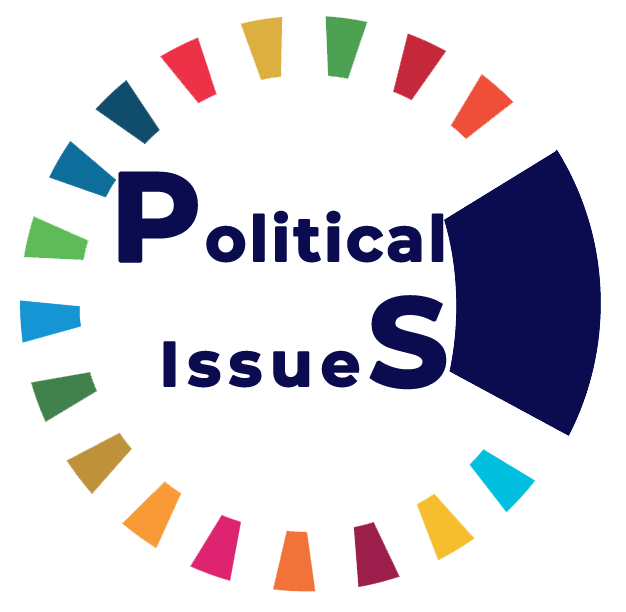China's Dual Trading: New Prospects for International Trade Amid Trade Tensions and Protectionist Policies
DOI:
https://doi.org/10.58298/802025698Keywords:
dual circulation , China, trade protectionism, globalizationAbstract
With signs of deglobalization, the world appears to be returning to an era of economic sovereignty, with countries increasingly placing national security and sovereign interests at the forefront. Many countries are focusing on putting their national interests first, reflecting a shift in global priorities for international trade.
Moreover, the uncertainty caused by the global pandemic has prompted many countries to create a more controllable supply chain system, highlighting the trend toward near-internal rather than external production. Instead of focusing on efficiency and cost as it used to, dual circulation has become a Chinese economic strategy or orientation that represents a shift in the country’s economic model, focusing on strengthening the domestic market (internal circulation) while maintaining openness to international markets (external circulation). This strategy was announced in the context of increasing global challenges, such as trade protectionism and geopolitical pressures, making it necessary for China to reduce its dependence on external demand and increase reliance on the domestic market. The core of the dual circulation strategy is to reduce reliance on trade-centered international circulation and promote domestic circulation consisting of production, distribution, circulation and consumption in terms of supply and demand, while maintaining the policy of opening up to the outside world. Expanding domestic demand based on consumption and implementing supply-side reforms to improve productivity and promote industrial upgrading through innovation are the core pillars of the strategy. The concept of "dual circulation" was first introduced on May 14, 2020, at the Standing Committee of the Political Bureau of the Communist Party of China Central Committee.
References
Antoine Brunet and Jean-Paul Guichard, The Chinese Orientation towards Global Hegemony and Economic Imperialism, translated by: Adel Abdel Aziz Ahmed, National Center for Translation, Cairo Egypt, first edition, 2016.
Hassan, Muhammad Fawzi. “The Economic Corridor between India, the Middle East, and Europe... Objectives and Implications.” Asian Horizons 2024. 8.14.
Sayed Mahmoud Ali Ghoneim, The National Security Strategy of the People’s Republic of China, Journal of Financial and Commercial Research, Port Said University, Volume 21, Issue Four, October 2020, p. 358.
Adnan Hussein Younis, Sultan Jassim Sultan, and Fadel Musa Hassan The new protectionism and its repercussions on the commercial interests of developing countries. House of Wisdom Magazine, 38 ,2020.)
Alaa Abdel Wahab Abdel Aziz. “The Belt and Road Initiative and Chinese influence in Latin America.” Political Issues 79, 2024
Biden, Joseph R. 2020. Why America must lead again. Foreign
Affairs 99 (2): 64–76.
FP Explainers, Dumping the Dollar: Will a new BRICS currency replace the US currency for trade? First Post, April 4, 2023. https://tinyurl.com/mr3tapt8
Hai-Jun Jiang and Miaojie Yu. "Understanding RCEP and CPTPP: from the perspective China’s dual circulation economic strategy." China Economic Journal, 14 (2021): 144 - 161. https://doi.org/10.1080/17538963.2021.1933055.
How Is the Belt and Road Initiative Advancing China’s Interests? https://chinapower.csis.org/china-belt-and-road-initiative/وقت الزياره15/1/2025
Jennifer Conrad, China’s Digital Yuan Works Just Like Cash—With Added Surveillance. WIRED, November 8, 2022. https://www.wired.com/story/chinas-digital-yuan-ecny-works-just-like-cash-surveillance/.
Jude Blanchette and Andrew Polk, “Dual Circulation and China’s New Hedged Integration Strategy,” Center for Strategic and International Studies, August 24, 2020. https://www.csis.org/analysis/dual-circulation-and-chinas-new-hedged-integration-strategy الزيارة 15/1/2025وقت
Mercy A. Kuo, “Assessing China’s and Russia’s Arctic Ambitions: Insights from Kristina Spohr”, The Diplomat, 20 December 2023, https://thediplomat.com/2023/12/assessing-chinas-and-russias-arctic ambitions/.
MICHAEL D. SWAINE, “ Chinese Views of the Singapore Summit Between Donald J. Trump and Kim Jong-un” , China Leadership Monitor, no. 57, sep.2018, https://carnegieendowment.org/files/Swaine_CLM57_Final.pdf
Michael Pettis, “Will China’s Common Prosperity Upgrade Dual Circulation?,” Carnegie Endowment for International Peace, October 15, 2021.https://carnegieendowment.org/china-financial-markets/2021/10/will-chinas-common-prosperity-upgrade-dual-circulation?lang=enوقت الزيارة 15/1/2025
Milton L. Mueller and Zixiang Tan. 1996. China in the Information Age: Telecommunication and the Dilemmas of Reform. Greenwood Publishing Group Inc., USA.pp 33-46
Ping Wei, Xiaodan Mao and Xiaohong Chen. "Institutional investors' attention to environmental information, trading strategies, and market impacts: Evidence from China." Business Strategy and the Environment (2020). https://doi.org/10.1002/bse.2387.
Renliang Liu, Liugang Sheng and Jian Wang. "Faking Trade for Capital Control Evasion: Evidence from Dual Exchange Rate Arbitrage in China." International Finance eJournal (2021). https://doi.org/10.1016/j.jimonfin.2023.102926.
Rise of the “Big 4”-The semiconductor industry in Asia Pacific, Deloitte China, January 18, 2024. https:// www2.deloitte.com/cn/en/pages/technology-media-and telecommunications/articles/rise-of-the-big-4.html .
Su, L., & Liang, J. (2021). Understanding China’s New Dual Circulation Development Strategy: A Marxian Input-Output Analysis. Review of Radical Political Economics, 53(4), 590-599. https://doi.org/10.1177/04866134211021971 .
Will the Dual Circulation Strategy Enable China to Compete in a Post-Pandemic World? https://chinapower.csis.org/china-covid-dual-circulation-economic-strategy/.
Additional Files
Published
Issue
Section
License
Copyright (c) 2025 محمد عباس احمد

This work is licensed under a Creative Commons Attribution 4.0 International License.
This is an Open Access article distributed under the terms of the creative commons attribution (CC BY) 4.0 international license which permits unrestricted use, distribution, and reproduction in any medium or format, and to alter, transform, or build upon the material, including for commercial use, providing the original author is credited.






